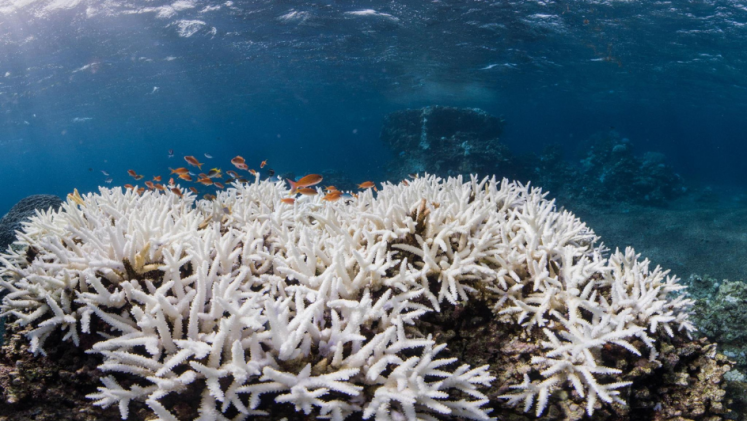Our oceans are important as they regulate our climate, produce oxygen, provide food and income, and support biodiversity. They are also vital for transportation, recreation and the economy. Due to human actions, our oceans are under threat from issues like sea level rise, ocean warming and ocean acidification. The latter is the process in which the pH of the ocean decreases, making its water more acidic. This occurs when carbon dioxide from human activities is absorbed by seawater. To learn more about ocean acidification and its impacts, we sat down with our expert Dr. Jack O’Connor.
What is ocean acidification exactly, and why is it such a threat?
Ocean acidification is a problem that gets overlooked, because it involves complex chemical processes. The ocean acts as a natural buffer against CO2 in the atmosphere, absorbing it into the water. Since the start of the industrial revolution roughly 200 years ago, our CO₂ emissions have accelerated. The amount of carbon dioxide that is absorbed by the water has been increased by approximately 25 per cent. When absorbed into the water, it creates a chemical chain reaction that ultimately releases bicarbonate and hydrogen ions that make the seawater more acidic.
Furthermore, the increasing acidity reduces the amount of carbonate in the seawater. Sea life is adapted to certain oceanic conditions, thriving within a narrow band and struggling when pushed outside of their “niche” conditions. Currently, these conditions are changing. Carbonate is essential for some ocean organisms, as it is what they use to build their shells. For example, corals use carbonate to build their skeletons. The less carbonate available in the water, the less capacity ocean creatures have to build their critical structures. Structures that already exist can be eroded by acidity, causing holes in shells of creatures like crabs and sea turtles. At worst, animals will not be able to form shells at all.
How does ocean acidification impact the future of our oceans, ocean ecosystems and our own lives?
The concerning aspect is that the long-term effects of ocean acidification remain unknown. While nature is adaptable, the current rate of change surpasses its ability to adjust. Acidification occurs unevenly throughout regions of oceans around the world, causing species to migrate, which leaves ecosystems vulnerable. For example, if a certain species leaves an ecosystem they are a vital part of, the ecosystem may no longer be able to function properly once the species has left. Similarly, introducing a new species in an already established ecosystem can have negative impacts. Therefore, a cascading effect of ocean acidification is that the diversity of ecosystems is under threat.
Some of the vulnerable organisms to ocean acidification are plankton species, which are referred to as the bedrock of the ocean food chain. If they disappear, not only marine species will be affected. This disruption of the food chain will severely impact one of our food sources, as people could experience food insecurity as well as income and livelihood loss.
How can we best prepare and respond to changing ocean conditions and resources?
We have to reduce emissions to mitigate climate change impacts. For ongoing acidification, adaptation measures are necessary. Even if we stop now, oceans will need a long time to recover and regain balance in terms of their chemical state. Locally, management techniques can be employed to address daily fluctuations. For example, oyster farms in Oregon, USA, adjusted water flow and inserted buffers when they experienced young oysters were no longer able to grow shells. On a larger scale, vegetated areas like seagrass beds and kelp forests offer lower acidification zones, serving as refuges for marine life.
How do we stop ocean acidification?
If we want to slow down the rate of the acidification process to allow nature to get back into balance, the key solution is reducing carbon emissions to such a level that the ocean can buffer them again. If nothing is done, the consequence will be a drastic decline in ocean biodiversity through the impacts of disappearing food chains and ecosystems.
Acidification is not happening in isolation. The ocean is not only acidifying, but also getting warmer, and the seawater level is rising. It is being overfished and polluted. All these major stressors interact with each other. To illustrate: corals are not only dying of acidification, but also due to ocean warming and pollution. In halting acidification and saving our oceans, all these issues have to be addressed together.



